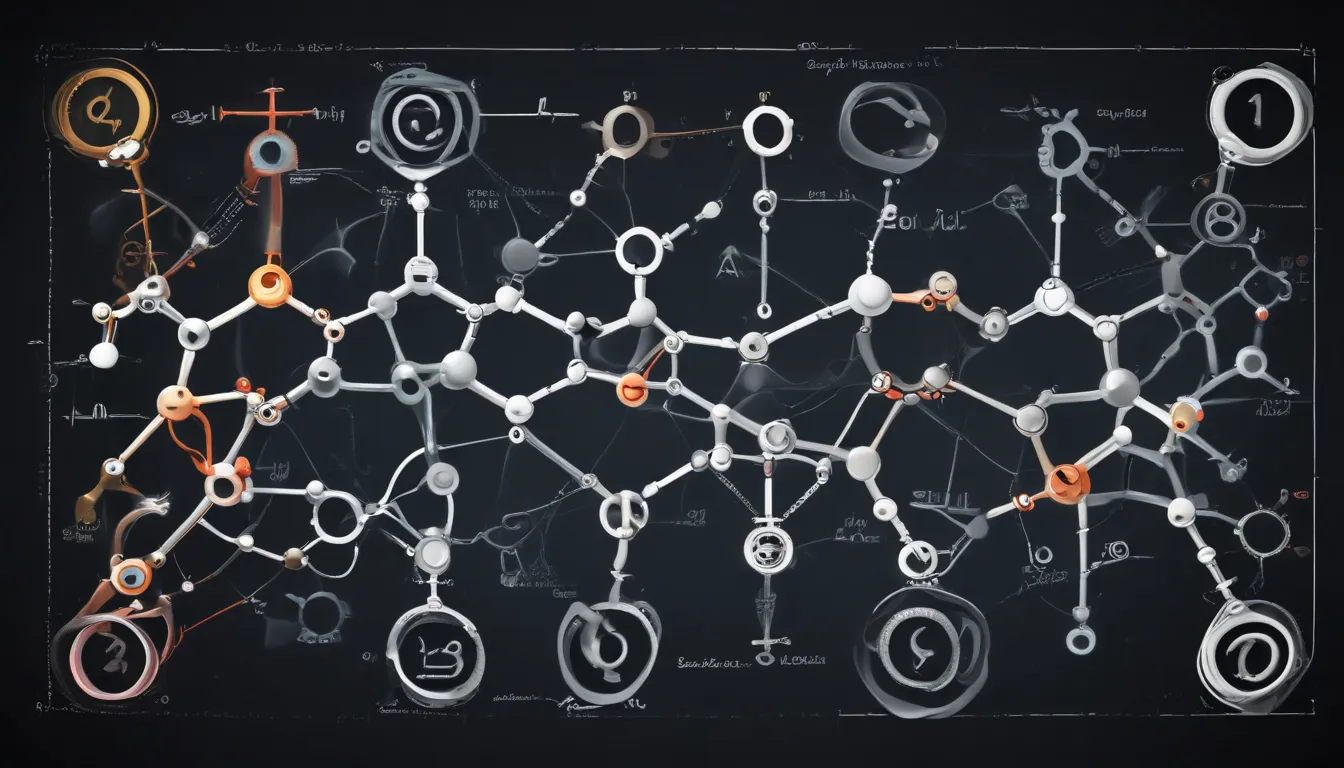A Note About Images: The images used in our articles are for illustration purposes only and may not exactly match the content. They are meant to engage readers, but the text should be relied upon for accurate information.
Are you ready to embark on a journey through the captivating world of Lewis structures? These fundamental diagrams in chemistry hold the key to unraveling the mysteries of molecular bonding, shape, and reactivity. Developed by the brilliant mind of Gilbert N. Lewis in the early 20th century, Lewis structures continue to revolutionize our understanding of chemical compounds. In this article, we will explore eleven mind-blowing facts about Lewis structures that will deepen your knowledge and appreciation of this essential concept. From predicting molecular geometry to understanding chemical reactions, let’s dive into the unbelievable world of Lewis structures!
Key Takeaways
- Lewis structures visually represent how atoms bond in molecules, providing insights into their shape, properties, and reactivity.
- By mastering Lewis structures, we can predict atom behavior, understand electron distribution, and even utilize computer programs to create complex diagrams.
The Fascinating World of Lewis Structures
Lewis structures are not just diagrams; they are windows into the intricate world of chemical bonding and molecular structure. Let’s uncover eleven unbelievable facts about Lewis structures that will leave you awestruck!
Visually Understanding Molecular Bonding
The essence of Lewis structures lies in their ability to provide a clear visual representation of how atoms bond within a molecule. By using dots to represent electrons and lines to represent bonds, these structures vividly showcase the sharing or transfer of electrons between atoms, offering a glimpse into the molecular connectivity.
Predicting Molecular Geometry and Properties
Analyzing a Lewis structure enables us to predict the molecular geometry, a crucial factor in determining the physical and chemical properties of a compound. The arrangement of atoms and lone pairs around the central atom dictates the shape, polarity, and reactivity of the molecule, guiding us in understanding its behavior.
Embracing the Octet Rule
The octet rule serves as a guiding principle in Lewis structures, emphasizing that atoms strive to achieve a stable configuration with eight electrons in their valence shell. By observing Lewis structures, we can witness how atoms attain an octet through single, double, or triple bonds, or by gaining or losing electrons.
Illuminating Chemical Reactions
Lewis structures offer insights into chemical reactions by illustrating electron distribution and bond formation. They facilitate the analysis of bond-breaking, electron rearrangements, and the overall transformation of compounds during a reaction, providing a deeper understanding of the underlying chemistry.
Embracing Resonance Structures
In situations where multiple Lewis structures can be drawn for a molecule, resonance structures come into play. Resonance allows for the delocalization of electrons, resulting in several valid arrangements that contribute to the stability and reactivity of the molecule.
Unraveling Hybridization
Through the lens of a Lewis structure, we can unravel the hybridization of atoms within a molecule. Hybridization involves the mixing of atomic orbitals to form new hybrid orbitals, influencing the geometry and bonding characteristics of the molecule.
Grasping Formal Charge Concepts
Formal charge evaluation is a valuable tool in understanding electron distribution within a molecule. By comparing an atom’s neutral state valence electrons to its Lewis structure, we can determine the formal charge, shedding light on electron distribution and stability.
Navigating Electronegativity’s Role
Electronegativity plays a pivotal role in Lewis structures, indicating an atom’s ability to attract electrons in a chemical bond. Understanding electronegativity helps in determining bond polarity and electron distribution between atoms, crucial aspects in molecular interactions.
Extending Lewis Structures to Diverse Compounds
While commonly associated with organic molecules, Lewis structures can be extended to compounds containing multiple elements. This versatility allows for the representation of complex structures involving various atom types, enriching our understanding of bonding and electron distribution.
Leveraging Technology for Complex Structures
As chemical systems become increasingly complex, the manual construction of Lewis structures can pose a challenge. Fortunately, computer software equipped with algorithms can swiftly and accurately generate intricate structure diagrams, aiding chemists in studying and analyzing complex molecules.
These eleven astonishing facts unveil the versatility and significance of Lewis structures in the realm of chemistry. By delving into their intricate details, we gain valuable insights into molecular bonding, geometry, and reactivity, empowering us to decode the enigmatic world of chemistry.
Conclusion
In conclusion, Lewis structures serve as invaluable tools in deciphering the complexities of molecular bonding and structure. By exploring the unbelievable facts surrounding Lewis structures, we gain a deeper appreciation for their role in predicting molecular behavior and properties. With practice and a grasp of fundamental concepts, navigating the world of Lewis structures becomes an engaging and enlightening journey.
FAQs
Q: What is a Lewis structure?
A: A Lewis structure, also known as a Lewis dot structure or electron dot structure, visually represents the arrangement of atoms and valence electrons in a molecule.
Q: How are Lewis structures useful?
A: Lewis structures help in understanding molecular connectivity, predicting geometry, determining bond polarity, and identifying formal charges in molecules.
Q: Can Lewis structures accurately depict the 3D shape of a molecule?
A: Lewis structures offer a simplified 2D representation of molecules and may not always accurately portray the 3D shape. However, they provide a foundational understanding of molecular geometry.
Q: How are Lewis structures drawn?
A: Lewis structures are drawn by symbolizing atoms and using dots or lines to represent valence electrons required to satisfy the octet rule. Lone pairs of electrons are typically denoted as dots.
Q: Are there exceptions to the octet rule in Lewis structures?
A: Yes, certain elements such as hydrogen, boron, and those beyond the third period in the periodic table can have fewer than eight valence electrons and maintain stability.
Q: Can Lewis structures be used for all molecules?
A: Lewis structures are primarily suited for covalent compounds where electron sharing occurs. They are less commonly employed for ionic compounds involving electron transfer.
Q: How can I determine the polarity of a molecule from its Lewis structure?
A: Consider the electronegativity difference between atoms and the molecular geometry to infer the polarity of a molecule based on its Lewis structure. Experimental verification is advised for accuracy.
Q: Can I determine the Lewis structure of a molecule from its formal charge?
A: While formal charge aids in assessing electron distribution, determining the Lewis structure of a molecule involves counting valence electrons and depicting bond formation to satisfy the octet rule.
Q: Are there exceptions to the octet rule in Lewis structures?
A: Yes, molecules with an odd number of electrons or an expanded octet, where atoms can exceed eight valence electrons, present exceptions to the octet rule.
Q: How can I practice drawing Lewis structures?
A: Enhance your comprehension of Lewis structures by engaging in exercises, referencing the periodic table, and familiarizing yourself with electron configurations and the octet rule. Online resources and tutorials offer additional guidance.
Embark on an exciting exploration of Lewis structures, where each fact unveils a new layer of chemical understanding. By immersing yourself in the world of molecular bonding and structure, you’ll unearth a wealth of knowledge that enriches your appreciation for the wonders of chemistry. Dive deep, draw boldly, and discover the magic of Lewis structures!






